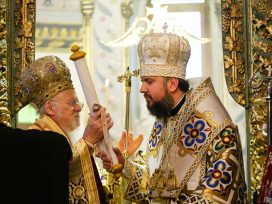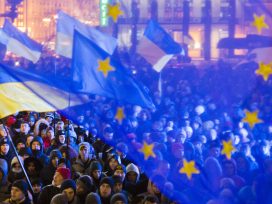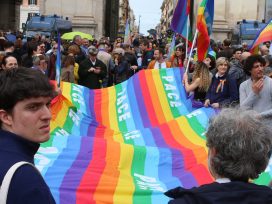The changing dilemmas of Ukrainian Orthodoxy
The January 2019 creation of an autocephalous Orthodox Church of Ukraine, independent of Russian religious and political power, has produced tensions at home and in the wider Orthodox world. Presented by the Poroshenko regime as a patriotic symbol, it has yet to establish itself as the dominant Ukrainian church. Moscow’s efforts to undermine the OCU have hindered its recognition globally, though the tide may be turning and the church’s future depends on how it meets these challenges.
On Easter Monday 2018, Ukrainian President Petro Poroshenko paid a visit to Bartholomew, the Ecumenical Patriarch of Constantinople, and asked the primus inter pares to support an autocephalous (i.e. independent) Orthodox church for Ukraine, freeing Ukrainian Orthodoxy from Russian control.
Poroshenko’s request was the latest bid in the longstanding project of securing an independent Ukrainian church recognized by the global Orthodox community. This project had its roots in the pre-Soviet era, with its current incarnation dating to the earliest days of Ukrainian independence. Every Ukrainian president except Viktor Yanukovych supported the idea of Ukrainian autocephaly. Still, until 2018, little concrete progress had been made towards the creation of such a church. The reasons were both domestic and international: at home, the idea of an autocephalous Ukrainian church was controversial, and abroad, the leaders of the other Orthodox churches around the world were hesitant to antagonize the Russian Orthodox Church.
This time was different, in both arenas. Domestically, especially since the 2014 Russian annexation of Crimea and invasion of the Donbas, it had become unpalatable to many in Ukraine that the only canonical Orthodox church in the country was the Ukrainian Orthodox Church–Moscow Patriarchate. This church is a nominally autonomous part of the larger structure of the Russian Orthodox Church; it thus comes under the authority of an institution widely understood to be an arm of the Russian state. The percentage of Ukrainians who self-identify as belonging to the UOC-MP had plummeted since 2014. Severing ties with the Russian Orthodox Church came to be seen, therefore, as a concrete way to reduce Russian influence in Ukraine.
Likewise, Constantinople was unprecedentedly eager to reduce Russian influence in the Orthodox world. Although Bartholomew holds the title of primus inter pares, in reality the global Orthodox Church has for centuries been dominated not by Constantinople, but Moscow. Around half of the 300 million Orthodox believers worldwide belong to the Russian Orthodox Church. In terms of both sheer numbers and geopolitical influence, it wields immense power within the international Orthodox community. In 2016, the church deeply offended Bartholomew by boycotting a Pan-Orthodox Council in Crete, and, beginning around the same time, the Russian hierarchy increasingly spoke of the Ecumenical Patriarchate with a mix of suspicion and disdain as a ‘Western’ institution, dependent on the US. 1Unsurprisingly, then, in the years immediately before Poroshenko’s April 2018 visit to Istanbul, the Ecumenical Patriarchate’s attitude toward Moscow had become more hostile.
Increasing openness to a canonical autocephalous church in Ukraine, and tension between the Ecumenical Patriarchate and the Russian Orthodox Church, started a process that had long seemed farfetched. After half a year of stop-and-start negotiations, Constantinople agreed to convene a council to form the Orthodox Church of Ukraine (OCU). The highly-anticipated Tomos of Autocephaly, as the document granting independence to the OCU is known, was handed over to Epiphanius, the newly-elected head of the new church, in January 2019. The church’s first liturgy was celebrated in Kyiv on Orthodox Christmas Day.
The new OCU superseded two churches that were an established part of the Ukrainian religious landscape but were not recognized as canonical by the global Orthodox community: the Ukrainian Orthodox Church–Kyiv Patriarchate (UOC-KP) and the Ukrainian Autocephalous Orthodox Church (UAOC). The UOC-KP broke away from the UOC-MP in the early 1990s, under the leadership of Filaret (Denysenko), who had held high office in the Russian Orthodox Church before the collapse of the Soviet Union. Once Ukraine became independent, he saw a better future for Ukrainian Orthodoxy (and, it should be said, for himself) in an independent church. The UOC-KP had been a thorn in Moscow’s side since its creation, and Filaret so antagonized the Russian hierarchy that he was eventually anathematized in 1997. The second church, the UAOC – a reincarnation of a short-lived interwar church – was much smaller and confined mostly to Western Ukraine. Its political influence was minimal but the leadership demanded to be included in the creation of the OCU due to its historic status (as the first attempt at an autocephalous Ukrainian church).
Both the UOC-KP and the UAOC have now been dissolved and their hierarchies assimilated into the OCU. But the creation of the OCU has by no means unified Ukrainian Orthodoxy. Even with its drop in support since 2014, the UOC-MP is still a powerful player in Ukraine, with nearly twice as many parishes as the OCU. As of September 2019, fewer than five per cent of UOC-MP parishes (just over five hundred out of twelve thousand) have opted to join the OCU, mostly in western and central Ukraine.2
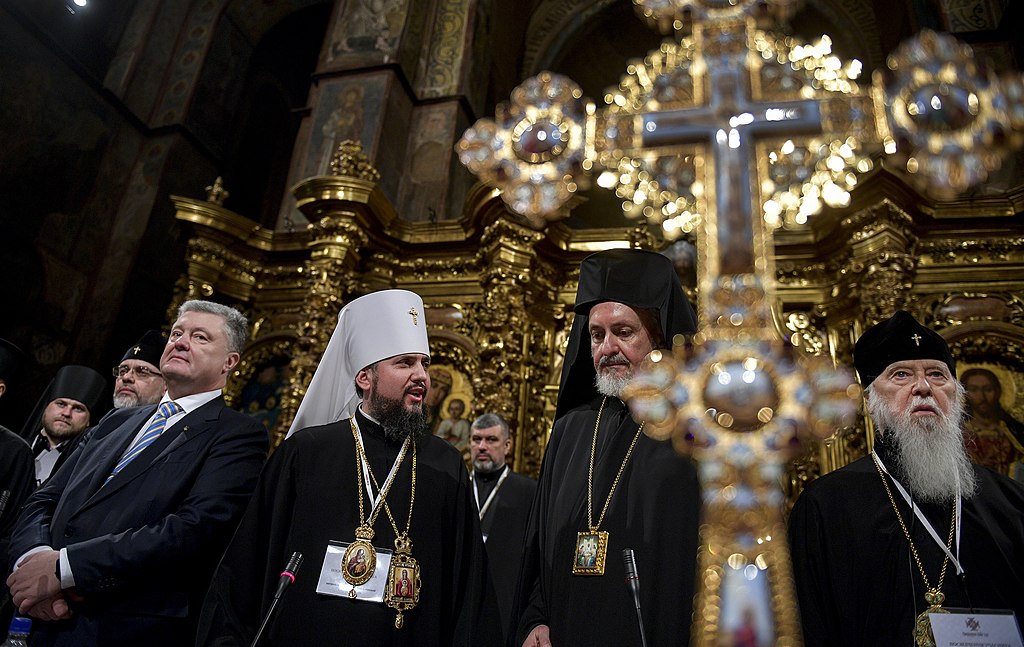
Unification council of Orthodox Church in Ukraine
Photo by The Presidential Administration of Ukraine via Wikimedia Commons
Religious autonomy as political sovereignty
Despite this persisting division, during the Poroshenko era, both the government and the OCU leadership tried to present a clear narrative: the new church meant Ukrainian religious emancipation from Russian Orthodoxy, something crucial for the Ukrainian state’s stability and security. This marked an important departure from the religious rhetoric which had dominated the nearly three decades since Ukrainian independence: that one of Ukraine’s strengths is that the church is linked not to the state, as in Russia, but the people. The creation of the OCU, and the rhetoric from both church and state that came with it, disrupted this established narrative. The circumstances of its creation, and the rhetoric of both church and state officials in the following months, meant the OCU began to resemble a state church. As such, the justification for its existence undermined its own legitimacy.
The Ukrainian campaign for autocephaly in the second half of 2018 relied on historical arguments. It claimed that the Ukrainian church’s subordination to Moscow was unjust and uncanonical; it also made a moral claim, emphasizing the corruption of the Russian Orthodox Church and the need for an institution that could carry on the spiritual values of the Maidan. But, most strikingly, there was also a geopolitical argument: the very existence of the Ukrainian state depended on an independent Ukrainian Orthodox Church.
Both the state and the church forcefully employed this rhetoric. In October 2018, Poroshenko gave an address declaring that the creation of an autocephalous Ukrainian church is ‘a question of our independence. This is a question of our national security. This is a question of our statehood. This is a question of world geopolitics…Autocephaly is a component of our state’s pro-European and pro-Ukrainian strategy’3. And, in a March 2019 interview, Epiphanius echoed Poroshenko’s rhetoric: ‘Without a unified, nationally independent Orthodox church, we cannot build a strong, powerful, European, independent Ukrainian state’4.
In the lead-up to the Tomos, this appeal to state sovereignty seemed to resonate with the Ukrainian population. Once obscure debates over the nature of canonicity and Orthodox church history became pressing political issues. Throughout 2018, opinion polls consistently showed high approval ratings for autocephaly, and the question ‘What is the Tomos?’ finished behind only ‘bitcoin’ and ‘measles’ in Google searches for in Ukraine that year.5 In the Razumkov Center’s 2018 year-end survey, Ukrainian autocephaly was deemed ‘event of the year’ by the highest number of respondents, beating the controversial introduction of martial law by Poroshenko, the Kerch Strait incident, and the ongoing war in the Donbas.6
Yet, as the new church took shape, a problem with this approach emerged. Presenting the OCU as a fundamental part of Ukraine’s divorce from Russia created an association between church and state difficult to reconcile with Ukraine’s multiconfessional reality. Even the most optimistic OCU backers recognized that the new church was unlikely to become the sole Orthodox church operating on Ukrainian territory in the near future. They were also aware of the problem that fully one third of Ukrainians do not identify as Orthodox.7 Could this new church benefit the sovereignty of the Ukrainian state without creating an uncomfortably close church-state bond?
The Zelensky factor
Perhaps just as damaging as this church-state nexus, the pursuit of autocephaly became associated not only with the state but specifically Poroshenko’s re-election campaign. The increasingly unpopular incumbent’s campaign sought to harness patriotic sentiment by emphasizing his administration’s efforts on behalf of the new church – one of the elements of his now-infamous slogan ‘Army. Faith. Language’. But what was meant to be a patriotic appeal was perceived largely as a cynical election ploy. Capitalizing on this disillusionment, anti-Poroshenko propaganda sought to undermine the new church by exaggerating the idea of the Ukrainian president as a new Henry VIII, seeking religious autonomy for his country to pursue his own personal aims. The church that he hoped would be the crowning achievement of his first term in office was effectively turned into an argument against him.
Volodymyr Zelensky’s massive electoral victory over Poroshenko in April 2019 marked the start of a new phase in the consolidation of the Orthodox Church of Ukraine. The creation of the OCU had been made possible by Poroshenko’s dedication to the cause. Now, only a few months into its existence, the OCU found itself in an uncertain position: Zelensky had taken no real stance towards the church during the campaign but, given the OCU’s close connection with Poroshenko, it seemed unlikely that the new president would work enthusiastically to foster the church.
A few months into this new era, we begin to get a sense for what lies in store for the OCU. As the first non-Orthodox Ukrainian president, Zelensky is not naturally inclined towards the performative ritual Orthodoxy that his predecessors, especially Poroshenko and Viktor Yushchenko, relied on as a marker of national identity and cohesion. On Zelensky’s first official visit to Istanbul in August, he met with Bartholomew. The meeting was highly indicative of Zelensky’s level of engagement with the question of the OCU: the Ukrainian president demonstrated little knowledge of church politics beyond the notion that the Tomos was Poroshenko’s pet project and, as such, something worth staying out of as much as possible.8
The position and policies adopted by the Zelensky government – which can best be described as benign neglect – will be one key element in deciding the OCU’s fate. The other will be the Russian factor. In the run-up to the Tomos and in the months after the OCU was created, the Russian Orthodox Church and Russian government made no secret of their virulent opposition to the creation of an autocephalous Ukrainian church, decrying it as a political trick and a violation of the Russian Orthodox Church’s canonical territory.
To undermine the new church, Moscow has used a two-pronged approach. Within the global Orthodox community, Russian emissaries have worked to call the legitimacy of the OCU into question, pressuring other Orthodox churches not to recognize the OCU as canonical. Constantinople and Kyiv had initially expected the OCU to gain canonical status fairly soon after its creation, but more than nine months later this process is still stalled. In parallel, within Ukrainian Orthodox politics, Russian church and state officials have offered ongoing support to the UOC-MP, but their main tactic has been fomenting unrest among former representatives of the UOC-KP, Filaret first and foremost.
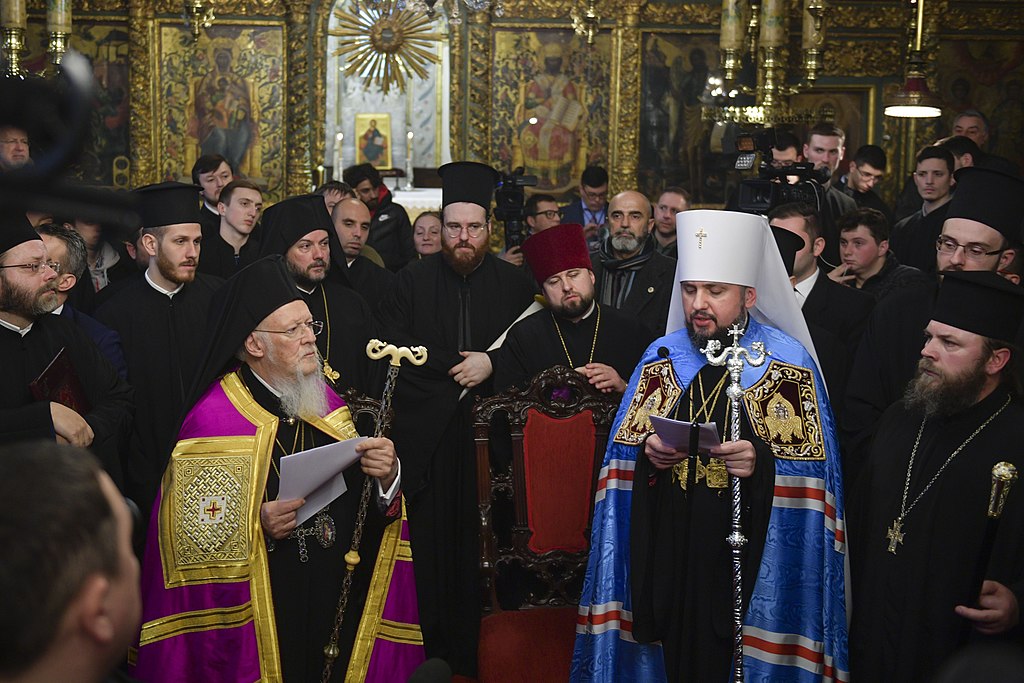
Signing of the tomos of autocephaly of the Orthodox Church of Ukraine
Photo by The Presidential Administration of Ukraine via Wikimedia Commons
The OCU and the world Orthodox community
On the global stage, the creation of the OCU with the backing of the Ecumenical Patriarchate was a genuinely momentous step, bringing Ukrainian Orthodoxy the formal status it had sought for centuries. But the OCU still faces major challenges in consolidating its position, opposition from other Orthodox churches above all.
The staunchest opponent of the OCU is, of course, the Russian Orthodox Church. Its clear antipathy towards the OCU is shared by the Russian government. The prospect of Ukrainian autocephaly prompted the Russian Orthodox Church to break ties with Constantinople in October 2018, barring all clergy and laity from attending liturgy or participating in other rites such as baptism or marriage in churches under the jurisdiction of the Ecumenical Patriarchate. In a January 2019 interview Putin himself asserted that the creation of the OCU ‘has nothing to do with spiritual life; we are dealing here with dangerous and irresponsible politicking’9.
Moscow has publicly urged the other Orthodox churches not to recognize the OCU, a division exposing fault lines in the Orthodox world with deep historical roots. Those churches dependent on the Russian church’s support, and have extensive historical and cultural ties with Russia, have criticized the Tomos. Indicating its traditionally pro-Russian leanings, the Serbian Orthodox Church borrowed language directly from the Russian position paper in issuing a statement condemning the council that created the OCU as ‘an anti-unifying pseudo-council which separates and breaks apart and has dug a deeper hole of estrangement and disintegration of society in the unfortunate country of Ukraine’10.
Other churches have been more conflicted on their stance towards this clash. The Albanian Orthodox Church has been outspoken in condemning the OCU, though it has also bemoaned the Russian Orthodox Church’s actions in severing ties with Constantinople. The question of Ukrainian autocephaly contributed to a June 2019 fracture within the Bulgarian Orthodox Church.11 The hierarchy of the Georgian Orthodox Church has, meanwhile, been among the friendliest towards the OCU, with some of its bishops going so far as to congratulate the OCU on Facebook, though the church has not taken an official position.12
For now, the Ecumenical Patriarchate has remained open to the OCU being recognized as canonical by the other Orthodox churches. This is crucial for the church’s future. In August 2019, the Holy Synod of the Church of Greece acknowledged Bartholomew’s right to grant the Tomos, announcing that it would reconsider the question of recognizing the Ukrainian church. An October 2019 council of the hierarchy of the Greek church offered even more hopeful signs from the OCU’s perspective, as over thirty five Greek hierarchs voiced their indignation at the pressure being put on them by the Russian Orthodox Church, expressing their support for the OCU. This was formalized in the Greek synod’s letter to Epiphanius on 28 October declaring that the Greek Orthodox church saw no obstacles to full communion with the OCU.13 That makes one important member of the Orthodox community that has recognized the OCU, but will any of the smaller Orthodox churches be willing to openly defy the Russian Orthodox Church?
Tensions within Ukrainian Orthodoxy
If the obstacles facing the OCU internationally are roughly as expected, the domestic situation has surprised many observers. Before its creation, there were widely predicted conflicts between the new church and the UOC-Moscow Patriarchate, and possibly even violent clashes over parish and monastic property. Despite some localized conflicts, the OCU’s biggest trouble has by and large come not from the Russian-linked UOC-MP, but the breakaway UOC-KP, which the OCU superseded.
This can partly be attributed to the UOC-MP’s relative institutional stability. The church lost only a small percentage of its parishes and hierarchs to the OCU, which has not been particularly aggressive in laying claim to monastic property currently in UOC-MP hands. The Kyiv Caves Monastery, the holiest site of Orthodoxy in Ukraine, for example, is still controlled by the UOC-MP. That the OCU has not been recognized by the other Orthodox churches also works in the UOC-MP’s favor, as it still has the sole universally recognized claim to canonicity on Ukrainian territory. In essence, the UOC-MP leadership seems sufficiently satisfied with their current position to avoid stirring up conflict with the OCU.
Less anticipated, but at least as troublesome, for the OCU has been what remains of the UOC-Kyiv Patriarchate. The UOC-KP was officially dissolved in conjunction with the creation of the OCU, and the selection of Epiphanius, UOC-KP Patriarch Filaret’s right-hand man, as head of the new church, was meant to signal a peaceful passing of the torch to the OCU leadership.
This arrangement did not satisfy Filaret, however, who felt that he was being sidelined at a moment that should have been his triumph: the independent Ukrainian church that he had for decades called for had finally been created, but he was not allowed to be directly involved in governing it. There were tensions between Filaret and the new church’s leadership from the outset, but only became public in May 2019 – within weeks of the second round of presidential elections. The timing indicates that Poroshenko’s impending departure may have played a role: Filaret may well have seen the arrival of a new president less invested in Orthodox church politics as an opportunity to reassert himself. By that time, Epiphanius had also had enough time in office to assert his authority, demonstrating that he was not content to be Filaret’s puppet, as the former patriarch had clearly anticipated.
In June 2019, Filaret declared the reestablishment of the UOC-KP in conjunction with a council he had convened (but which had no official status). In interviews, such as with Ukrainske Radiohe argued that the December 2018 council creating the OCU had been convened under misleading pretexts and that the official dissolution of the UOC-KP had been unlawful.14 In the end, however, his efforts bore little fruit, as virtually the entire OCU hierarchy remained loyal to their new church.
As Filaret has made his displeasure with the OCU known, there are signs that Russia and the Russian Orthodox Church has been reaching out to him. The head of the Kyiv Caves Monastery, an important figure in the UOC-MP, recently said in an interview that if Filaret decided to return to the UOC-MP, which he had broken with in the early 1990s, he would be received with honor.15 Even more surprisingly, Filaret has given interviews to the Russian-operated propaganda site Ukraina.ru and the Russian television channel Rossiia24.16 It seems that, for the time being at least, both Moscow and Filaret are operating along the principle that the enemy of my enemy is my friend.
Despite the failure of the June council, attempts to revive the UOC-KP continue. Filaret and his allies are currently pursuing two court cases: one contesting the Ministry of Culture’s official elimination of the UOC-KP as a religious organization, another over the procedures of liquidating its assets.17 It is unlikely that this secular recourse will bring Filaret more success than the ecclesiastical route did, but it is equally unlikely that Filaret will be dissuaded from further action if his court challenges fail.
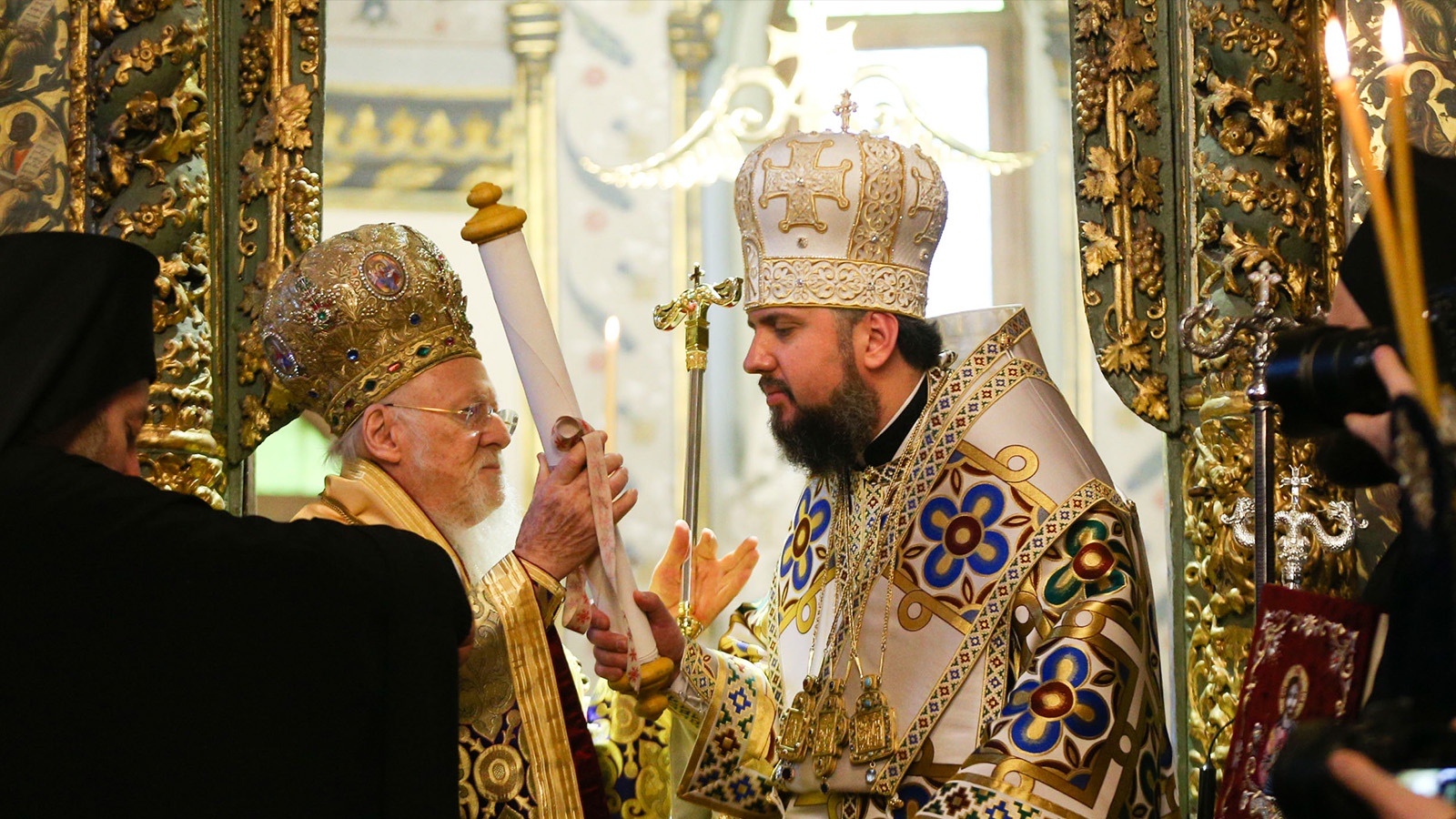
Photo by The Presidential Administration of Ukraine via Wikimedia Commons
Church and state in a new era
By and large, Epiphanius and the OCU hierarchy have met the numerous obstacles facing their church with equanimity. They have calmly rebuffed Filaret’s accusations and relieved him of some of the duties and offices he had maintained in the new church, while refusing to take the dramatic step of excommunicating him – because, as Epiphanius put it, ‘we will not become like the Moscow church’18.
Relations with the UOC-MP are also not as dire as might have been expected. This is largely because the OCU leadership has proceeded with caution, not pushing the UOC-MP too hard. Counter to what rhetoric from Poroshenko and the church leadership might have led some to believe before the Tomos was granted, it is clear that the UOC-MP is not going away any time soon. The OCU hierarchy has been forced to reckon with this fact, and though the church leadership itself still insists that total unification of orthodoxy in Ukraine is the ultimate goal, others are beginning to argue that the continued existence of the UOC-MP may not be such a bad thing after all. It adds another layer to Ukraine’s religious pluralism, and if the OCU faces competition from another Orthodox church, it may be more likely to carry out the internal reforms and, more generally, lead to a catharsis necessary for the church to thrive.19
If the OCU has so far proved rather adroit in handling challenges in the religious sphere, it remains to be seen if it will be able to navigate the current political situation with as much success. Showing that the OCU leadership is conscious that a close relationship with the government will not necessarily work in its favor (and, in the Zelensky era, may not even be possible), Epiphanius has actively distanced the OCU from the state, emphasizing that the new church receives far less financial support from the Ukrainian government than the Moscow Patriarchate did under Leonid Kuchma and Viktor Yanukovych.20 Still, a certain degree of state support (not only financial) will be necessary if the OCU is to continue claiming to be Ukraine’s primary Orthodox church.
Conclusion
Given how rapidly the question of Ukrainian autocephaly entered the Ukrainian public consciousness in late 2018, it has, in a striking reversal, faded just as quickly from view. A topic that once dominated news sites and Facebook discussions has now been relegated to an article or two every few weeks and some ongoing discussion only among those most invested in church politics.
The OCU’s creation was much heralded, but events since – both anticipated, such as Moscow’s ongoing attempts to undermine the new church, and unanticipated, like Zelensky’s landslide victory – have been a reality check. The church’s future in Ukraine is contingent on how well it manages to respond to these challenges. Its fate within the global Orthodox community also hangs in the balance: for now, the Ecumenical Patriarchate is staunchly backing the OCU. But a question remains: will the Ukrainian church remain at the top of Constantinople’s agenda, especially as the OCU continues to be a source of division within the world Orthodox community?
In autumn 2018, with anticipation of the impending Tomos high, the greatest concern was potential clashes with the UOC-MP and possible violence over parish control and church assets. A major risk for the still-to-be-formed church was to tie itself too closely Poroshenko and to resemble a state church. Now, nine months into the life of the OCU and four months after Zelensky’s inauguration, the picture has changed. The church has to perform a balancing act: warding off Filaret’s attempts to undermine the church, not antagonizing the UOC-MP, maintaining the good will of the large percentage of the population who initially supported the church, gaining international recognition, and figuring out how to convincingly present itself as the Orthodox Church of Ukraine without any significant support from the president. Ultimately, then, while the OCU has likely become institutionalized enough to ensure that it is a fixture of the Ukrainian religious landscape in the years to come, the dilemmas facing Ukrainian Orthodoxy continue to change and remain formidable.
This article is based on a piece published in the IWMPost 122/2018.
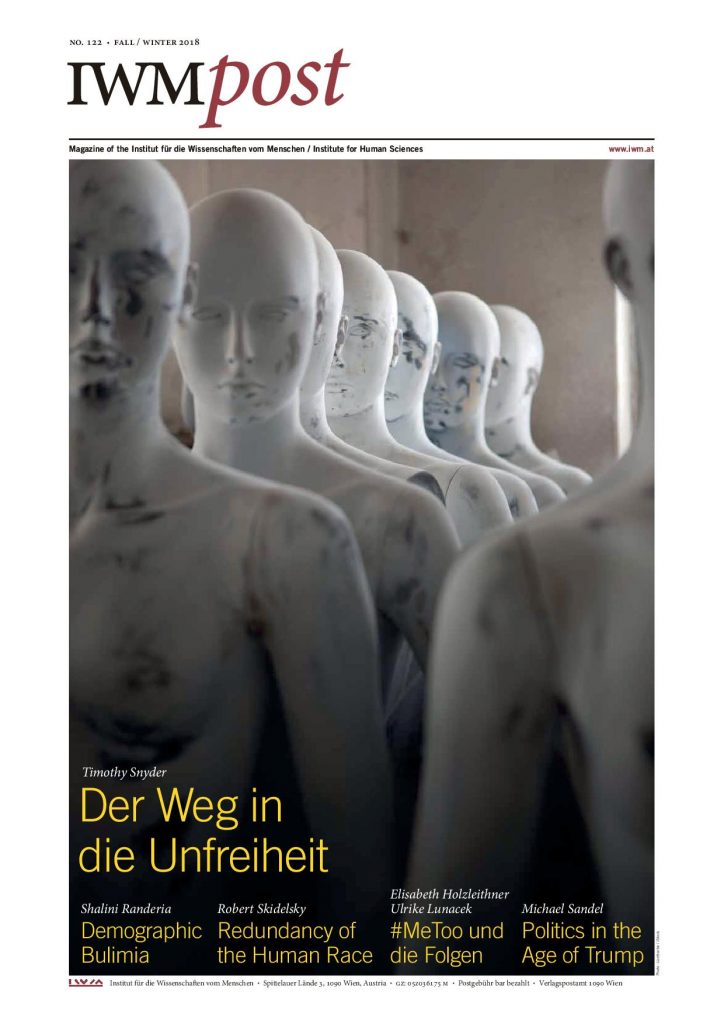
Kadri Liik, Momchil Metodiev, and Nicu Popescu, 'Defender of the faith? How Ukraine's Orthodox split threatens Russia, European Council on Foreign Relations, May 30, 2019, https://www.ecfr.eu/publications/summary/defender_of_the_faith_how_ukraines_orthodox_split_threatens_russia
https://www.president.gov.ua/news/zayava-prezidenta-ukrayini-u-zvyazku-iz-rishennyam-sinodu-vs-50346
https://trends.google.com.ua/trends/yis/2018/UA/
Ukraine 2018-2019: Cautious Optimism Before Elections (Assessments) http://razumkov.org.ua/uploads/article/2019_Pidsumky_2018.pdf
'Number of those Believing in God Decreases in Ukraine, According to Razumkov Center Studies', Religious Information Service of Ukraine blog, 24 May 2017, https://risu.org.ua/ua/index/all_news/community/social_questioning/67086/
'Interviews to Serbian periodicals Politika and Verčernje novosti, January 16, 2019 http://en.kremlin.ru/events/president/news/59680
The Office of the Holy Synod of Bishops, 'The Position of the Serbian Orthodox Church on the Church Crisis in Ukraine, 17 March 2019 http://www.spc.rs/eng/position_serbian_orthodox_church_church_crisis_ukraine
'Shemokmedi Archbishop Ioseb congratulates Ukrainian Church on receiving tombs on autocephaly', 13 January, 2019 https://1tv.ge/en/news/shemokmedi-archbishop-ioseb-congratulates-ukrainian-church-on-receiving-tomos-on-autocephaly/
Alya Shandra, 'Orthodox Church of Ukraine undergoing a cathatsis - Cyril Hovorun (interview'), 7 June 2019, http://euromaidanpress.com/2019/07/06/orthodox-church-of-ukraine-undergoing-a-catharsis-cyril-hovorun/
Published 8 November 2019
Original in English
First published by Eurozine
Contributed by Kate Younger © Kate Younger / Eurozine
PDF/PRINTIn collaboration with
In focal points
Newsletter
Subscribe to know what’s worth thinking about.
Related Articles
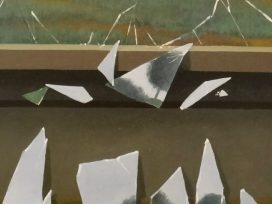
House keys recur in the stories of Crimean Tatars and Palestinians displaced from their respective homelands in the 1940s, and Ukrainian citizens fleeing Russian invasion since 2014. Ethnographic research and discourses on art and justice show how objects emblematic of home salvage the history of exiled peoples from oblivion.
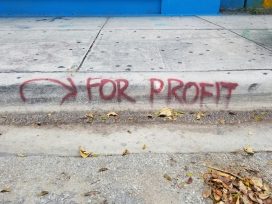
As capital consolidates, culture recedes, funding vanishes, access narrows. The question persists: why fund culture at all? Cultural managers from Austria, Hungary and Serbia discuss.
